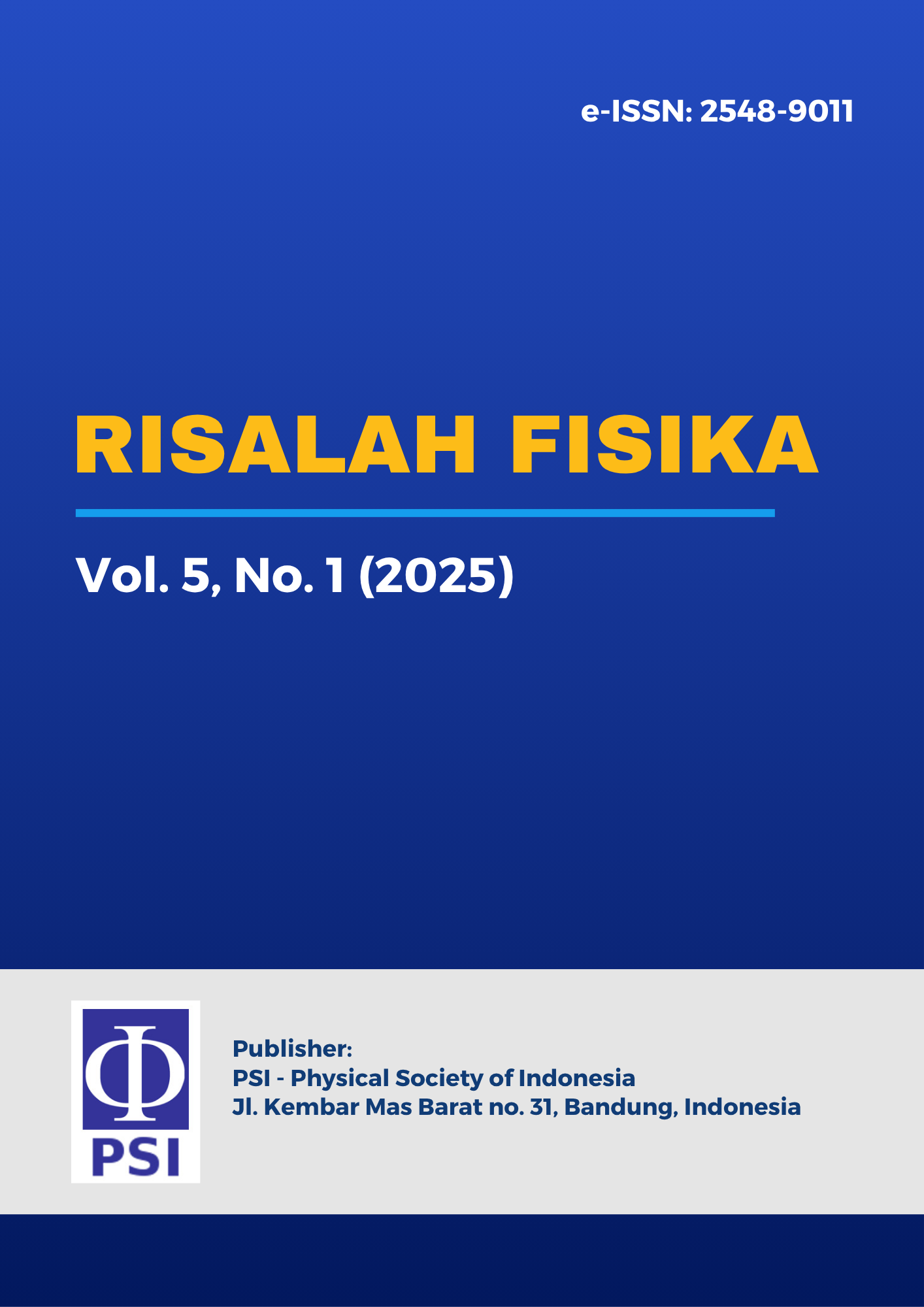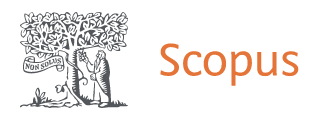Synthesis of Silica-Based Glass from Quartz Sand and P₂O₅-BaO-Na₂O Compounds Using the Melt-Quenching Technique
DOI:
https://doi.org/10.35895/rf.v5i2.31Abstract
This study reports the development of phosphate-based glass materials incorporating quartz sand sourced from Huta Ginjang, North Sumatra, Indonesia, with a specific focus on their potential application as host matrices for rare earth ions in optical amplification systems. Phosphate glasses are recognized for their excellent transparency and chemical stability, making them promising candidates for various optical applications. Quartz sand was collected and subjected to a cleaning process to eliminate impurities, such as dust and organic matter, which may negatively impact the quality of the resulting glass. The purified sand was subsequently ground using a ball mill for 4 h to achieve the desired particle size distribution. The ground quartz was then combined with phosphorus pentoxide (P₂O₅), barium oxide (BaO), and sodium oxide (Na₂O) in the following molar composition: x mol% quartz sand + (60 − x) mol% P₂O₅ + 10 mol% BaO + 30 mol% Na₂O, where x = 0, 2.5, 5, 10, 15, and 20 mol%. The glass batches were melted at 1200 °C for 3 h using the melt-quenching technique. The synthesized glass samples demonstrated good homogeneity and high optical transparency. The physical characteristics of the resulting materials indicate their suitability for use as host matrices in optical devices. Further analysis is required to assess the incorporation efficiency and spectroscopic properties of rare earth dopants within this glass system.
References
Alzahrani, J. S., Alrowaili, Z. A., Olarinoye, I. O., Sriwunkum, C., Kebaili, I., & Al-Buriahi, M. S. (2025). Gamma-radiation insulating performance of AlON-hardened Na2O–Bi2O3–SiO2–BaO–Fe2O3–ZrO2 glasses. Scientific Reports, 15(1), 6537.
Carta, D., Pickup, D., Knowles, J., Ahmed, I., Smith, M., & Newport, R. (2007). A structural study of sol–gel and melt-quenched phosphate-based glasses. Journal of Non-crystalline Solids, 353, 1759-1765.
El-Alaily, N. A., Abd-Elaziz, T. D., & Soliman, L. (2018). Effect of iron slag on the corrosion resistance of soda lime silicate glass. Silicon, 10, 11-20.
El-Bardai, R., Haounati, R., Hsini, A., Chahine, A., Luque, R., & Shaim, A. (2024). Design of a phosphate-based glass system as adsorbent for crystal violet dye removal. Journal of Environmental Chemical Engineering. https://doi.org/10.1016/j.jece.2024.114061.
Hutahaean, J., Tambunan, F., Rajagukguk, J., Sarumaha, C., & Kaewkhao, J. (2024). Quartz Sand “Huta Ginjang” On Physical Properties And Structure Of Phosphate Glass Medium. Journal of Physics: Conference Series. https://doi.org/10.1088/1742-6596/2908/1/012009.
Kageshima, Y., Kato, S., Shiga, S., Takagi, F., Minamisawa, H., Horita, M., Yamakami, T., Teshima, K., Domen, K., & Nishikiori, H. (2023). Impact of Ball Milling on the Hydrogen Evolution Performance of Cu2Sn0.38Ge0.62S3 Photocatalytic Particles Synthesized via a Flux Method.. ACS applied materials & interfaces. https://doi.org/10.1021/acsami.2c23103.
Kaur, P., Kaur, P., & Singh, T. (2024). Thermal stability and spectroscopic properties of Eu-doped phosphate glasses for lasing applications. Ceramics International, 50(5), 7868-7877.
Khan, I., Mukammil, S., Khan, N., Ifseisi, A. A., Assal, M. E., Shoaib, M., ... & Kaewkhao, J. (2025). Investigation of Radiation Shielding Properties Using MCNPX simulation and Scintillation Properties of Ce3+-ions Doped Silicate Glass System. Radiation Physics and Chemistry, 112789.
Li, L., Wang, F., Liao, Q., Wang, Y., Zhu, H., & Zhu, Y. (2020). Synthesis of phosphate based glass-ceramic waste forms by a melt-quenching process: The formation process. Journal of Nuclear Materials, 528, 151854. https://doi.org/10.1016/j.jnucmat.2019.151854.
Rad, A. H., Pirouzian, H. R., Toker, O. S., & Konar, N. (2019). Application of simplex lattice mixture design for optimization of sucrose-free milk chocolate produced in a ball mill. Lwt, 115, 108435.
Rajagukguk, J. (2016). Preparasi, Sifat Fisis Dan Analisis Termal Medium Gelas Fluorofosfat Didoping Oleh Ion Nd3+ Untuk Aplikasi Medium Penguat Laser. Jurnal Einstein, 4(3), 46–52.
Rajagukguk, J., Panggabean, J. H., Sarumaha, C., & Rajagukguk, D. H. (2022). Medium Gain Laser Neodymium (Nd3+) Berbasis Sistem Gelas Borat Dan Fosfat. Cattleya Darmaya Fortuna.
Rajagukguk, J., Simamora, P., Sitinjak, L., Simanullang, E., Sarumaha, C., Intachai, N., Kothan, S., & Kaewkhao, J. (2024). NIR Luminescence Properties of Nd3+ ion doped Glasses Medium Based on Huta Ginjang Quartz Sand. Radiation Physics and Chemistry. https://doi.org/10.1016/j.radphyschem.2024.112466.
Rajagukguk, J., Situmorang, R., Djamal, M., Rajaramakrishna, R., Kaewkhao, J., & Minh, P. H. (2019). Structural, spectroscopic and optical gain of Nd3+ doped fluorophosphate glasses for solid state laser application. Journal of Luminescence, 216, 116738.
Syafrizal, Hidayat, A. Y., Hadiana, W. mayzzani, Rifaldi, M. D., & Rasma, P. (2022). Karakterisasi Pasir Kuarsa di Daerah Bangka Sebagai Bahan Baku Panel Surya. Prosiding TPT XXXI PERHAPI, 21–32.
Umardani, Y., & Bukhori, M. (2007). KARAKTERISASI MATERIAL BALL MILL PADA PROSES PEMBUATAN SEMEN DENGAN METODA PENGUJIAN KEKERASAN, MIKROGRAFI DAN KEAUSAN. ROTASI, 9(4), 32-35.
Unasir, M., Riwikantoro, T., Ainuri, M. O. Z., & Arminto, D. (2015). Synthesis of SiO2 nanopowders containing quartz and cristobalite phases from silica sands. 33(1), 47–55.
Wei, LK, Abd Rahim, SZ, Al Bakri Abdullah, MM, Yin, ATM, Ghazali, MF, Omar, MF, Nemeș, O., Sandu, AV, Vizureanu, P., & Abdellah, AE-h. (2023). Memproduksi Serbuk Logam dari Serpihan Mesin Menggunakan Proses Ball Milling: Sebuah Tinjauan. Materials , 16 (13), 4635. https://doi.org/10.3390/ma16134635
Xu, D., Saini, M., Zhang, D., Zhang, L., Liu, Y., & Wang, L. (2019). Equivalence of enthalpic nature of the glasses produced by crystal-damage and melt-quenching. Journal of Alloys and Compounds. https://doi.org/10.1016/J.JALLCOM.2018.11.365
Sirait, R. A., Salomo, S., Muhammad, J., & Taer, E. (2022). Sintesis Dan Karakterisasi Nanopartikel Oksida Besi Menggunakan Metode Ball Milling Dan Kopresipitasi. Komunikasi Fisika Indonesia, 19(2), 91.







